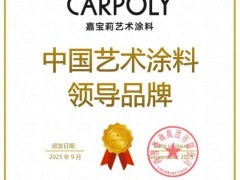高企的碳?xì)浠衔飪r(jià)格使可再生能源對(duì)發(fā)電更具吸引力
LCOE報(bào)告,風(fēng)能和光伏發(fā)電的成本仍然低于化石燃料替代品
碳?xì)浠衔锍杀镜纳蠞q已經(jīng)超過(guò)了可再生能源材料和安裝成本的增長(zhǎng)
據(jù)油價(jià)網(wǎng)5月22日?qǐng)?bào)道,隨著能源轉(zhuǎn)型的全面展開(kāi),新能源研究機(jī)構(gòu)彭博新能源財(cái)經(jīng)(BloombergNEF)估計(jì),在未來(lái)30年,全球轉(zhuǎn)型將需要大約173萬(wàn)億美元的能源供應(yīng)和基礎(chǔ)設(shè)施投資,預(yù)計(jì)到2050年,可再生能源將滿(mǎn)足我們85%的能源需求。BNEF預(yù)計(jì),到2030年,電池行業(yè)的鋰和鎳消費(fèi)量將至少達(dá)到目前水平的5倍。與此同時(shí),用于多種電池類(lèi)型的鈷的需求將躍升約70%。銅、錳、鐵、磷和石墨等各種電動(dòng)汽車(chē)和電池大宗商品的需求將急劇上升,這些都是清潔能源技術(shù)所需的,也是擴(kuò)大電網(wǎng)所需的。
不幸的是,可再生能源所需的大宗商品價(jià)格不斷上漲,以及供應(yīng)鏈的大規(guī)模中斷,已經(jīng)增加了建立新的綠色能源項(xiàng)目的成本,這可能會(huì)放慢轉(zhuǎn)型的步伐。
這種趨勢(shì)是有問(wèn)題的,原因很簡(jiǎn)單,成本下降是清潔能源繁榮的主要推動(dòng)力。
在過(guò)去的十年中,太陽(yáng)能發(fā)電的價(jià)格下降了89%,而陸上風(fēng)力發(fā)電的價(jià)格下降了70%。
與此同時(shí),電動(dòng)汽車(chē)電池價(jià)格的迅速下降也在推動(dòng)電動(dòng)汽車(chē)成為主流方面發(fā)揮了重要作用。據(jù)彭博社報(bào)道,在過(guò)去的十年中,電動(dòng)汽車(chē)電池的價(jià)格已經(jīng)從每千瓦時(shí)1200美元下降到2020年的137美元。對(duì)于一個(gè)50千瓦時(shí)電池組的電動(dòng)汽車(chē)來(lái)說(shuō),這相當(dāng)于節(jié)省了4.3萬(wàn)美元的實(shí)際成本。
但更重要的是,如今居高不下的天然氣和煤炭?jī)r(jià)格幫助可再生能源保住了全球最便宜的新發(fā)電選擇的桂冠——盡管設(shè)備和材料成本不斷上漲。
根據(jù)西班牙開(kāi)發(fā)商Acciona Energia通過(guò)能源情報(bào)的說(shuō)法,“對(duì)可再生能源的需求依然強(qiáng)勁,因?yàn)樗鼈儽然剂细吒?jìng)爭(zhēng)力”。
比石油和天然氣便宜
能源情報(bào)的高級(jí)記者Philippe Roos在《最低能源成本報(bào)告》中分析了美國(guó)、西歐、日本、中東和亞洲發(fā)展中國(guó)家等5個(gè)地區(qū)的傳統(tǒng)和可再生發(fā)電的發(fā)電成本,也被稱(chēng)為能源均衡成本(LCOE)。這些數(shù)據(jù)還包括中東和亞洲發(fā)展中國(guó)家石油、天然氣和煤炭的盈虧平衡價(jià)格,是基于能源情報(bào)專(zhuān)有的LCOE模型得出的。
能源情報(bào)的研究表明,可再生能源在成本效益方面可能已經(jīng)永久性地超過(guò)天然氣,而對(duì)最低成本的競(jìng)爭(zhēng)主要仍在太陽(yáng)能光伏和陸上風(fēng)能之間進(jìn)行。即使在日本,這種趨勢(shì)也是真實(shí)的。在日本,房地產(chǎn)的稀缺阻礙了土地密集型可再生能源的發(fā)展,陸上風(fēng)能超過(guò)了煤炭,光伏取代了天然氣。
根據(jù)LCOE的報(bào)告,“風(fēng)能和光伏發(fā)電的成本仍然低于化石燃料替代品,尤其是在當(dāng)前天然氣和煤炭?jī)r(jià)格高企的情況下”,鑒于供應(yīng)鏈問(wèn)題同樣困擾著這兩個(gè)行業(yè),可再生能源技術(shù)仍然是最便宜的。
而且,即使天然氣價(jià)格下降,也只是在一定程度上讓化石燃料更接近可再生能源。然而,這種情況目前看來(lái)不太可能發(fā)生。
但目前的跡象表明,化石燃料的高價(jià)格將持續(xù)很長(zhǎng)一段時(shí)間。道達(dá)爾能源首席執(zhí)行官潘彥磊最近表示,該公司可能會(huì)將歐洲天然氣的長(zhǎng)期價(jià)格預(yù)期從5美元/百萬(wàn)英熱單位左右調(diào)整為10美元/百萬(wàn)英熱單位左右。
季廷偉 摘譯自 油價(jià)網(wǎng)
原文如下:
Renewables Remain ‘Cheap’ Despite Supply Chain Chaos
High hydrocarbon prices make renewables more attractive for power generation.
LCOE report: “wind and PV generation costs remain lower than fossil fuel alternatives.
Rising costs of hydrocarbons have outpaced growing material and installation costs for renewables.
With the energy transition in full swing, new energy research provider BloombergNEF estimates that the global transition will require ~$173 trillion in energy supply and infrastructure investment over the next three decades, with renewable energy expected to provide 85% of our energy needs by 2050. BNEF projects that by 2030, consumption of lithium and nickel by the battery sector will be at least 5x current levels. Meanwhile, demand for cobalt, used in many battery types, will jump by about 70%. Diverse EV and battery commodities such as copper, manganese, iron, phosphorus, and graphite--all of which are needed in clean energy technologies and are required to expand electricity grids--will see sharp spikes in demand.
Unfortunately, rising prices of the commodities needed for renewable energy as well as massive supply chain disruptions have been increasing the costs of setting up new green power projects, which could slow down the pace of the transition.
This trend is problematic for the simple reason that falling costs have been the major driving force for the clean energy boom.
Over the past decade, the price of solar electricity dropped 89%, while the price of onshore wind fell by 70%.
Meanwhile, rapidly falling EV battery prices have played a big role in helping electric vehicles go mainstream. As per Bloomberg, over the past decade, EV battery prices have fallen from almost $1,200 per kilowatt-hour to just $137/kWh in 2020. For an EV with a 50 kWh battery pack, that adds up to savings of more than $43,000 in real terms.
But here’s the kicker: today’s stratospheric gas and coal prices have helped renewables retain their crown as the cheapest option for new power generation across the globe--despite rising equipment and materials costs.
According to Spanish developer Acciona Energia via Energy Intelligence, ‘‘the appetite for renewables remains strong as they are "massively" more competitive than fossil fuels.’’
Cheaper than oil and gas
In its lowest Energy Cost Report, Energy Intelligence’s senior reporter Philippe Roos has analyzed the the cost of generating electricity, also known as levelized cost of energy (LCOE), of conventional and renewable forms of electricity generation in five regions: the U.S., Western Europe, Japan, the Mideast and developing Asia. The data, which also include break-even prices for oil, gas and coal in the Mideast and developing Asia, is based on Energy Intelligence’s proprietary LCOE model.
he EI study reveals that renewables have probably overtaken gas permanently on cost-effectiveness, with the race for lowest cost remaining mostly between solar photovoltaic (PV) and onshore wind. This trend rings true even in Japan, where the scarcity of real estate handicaps land-intensive renewables, onshore wind beats coal and PV displaces gas.
According to the LCOE report, “wind and PV generation costs remain lower than fossil fuel alternatives, especially with current high gas and coal prices”, and with supply chain issues troubling both sectors equally, renewable technologies are still the cheapest.
And even if gas prices fall, it will at this point only partly bring fossil fuels closer to par with renewables. That scenario, however, doesn’t look likely at this time.
But current indications are that high fossil fuel prices are here for the long-haul: TotalEnergies (NYSE:TTE) CEO Patrick Pouyanne recently said that the company might change its long-term gas price assumption in Europe from around $5/MMBtu to around $10/MMBtu.
免責(zé)聲明:本網(wǎng)轉(zhuǎn)載自其它媒體的文章及圖片,目的在于弘揚(yáng)石化精神,傳遞更多石化信息,宣傳國(guó)家石化產(chǎn)業(yè)政策,展示國(guó)家石化產(chǎn)業(yè)形象,參與國(guó)際石化產(chǎn)業(yè)輿論競(jìng)爭(zhēng),提高國(guó)際石化產(chǎn)業(yè)話(huà)語(yǔ)權(quán),并不代表本網(wǎng)贊同其觀點(diǎn)和對(duì)其真實(shí)性負(fù)責(zé),在此我們謹(jǐn)向原作者和原媒體致以崇高敬意。如果您認(rèn)為本站文章及圖片侵犯了您的版權(quán),請(qǐng)與我們聯(lián)系,我們將第一時(shí)間刪除。







